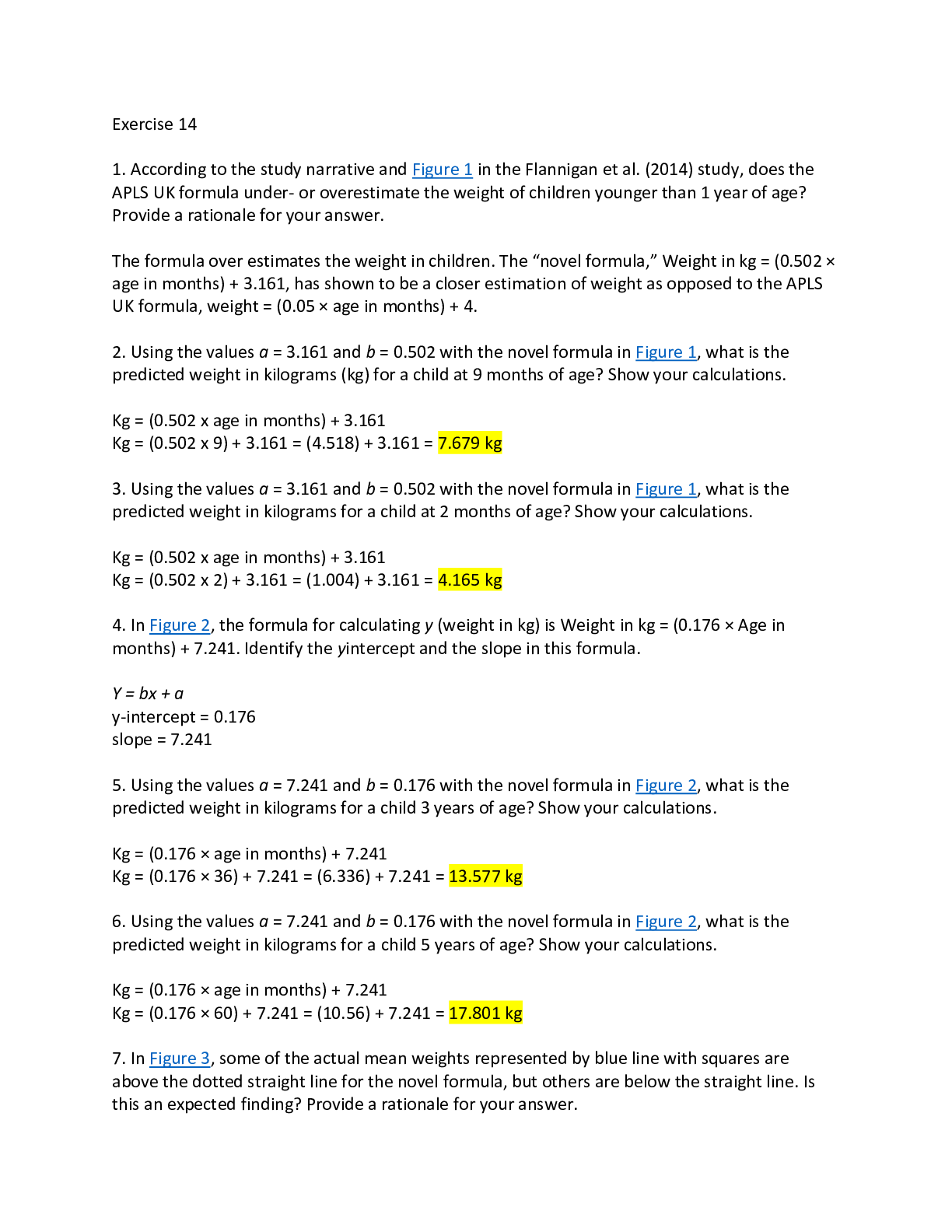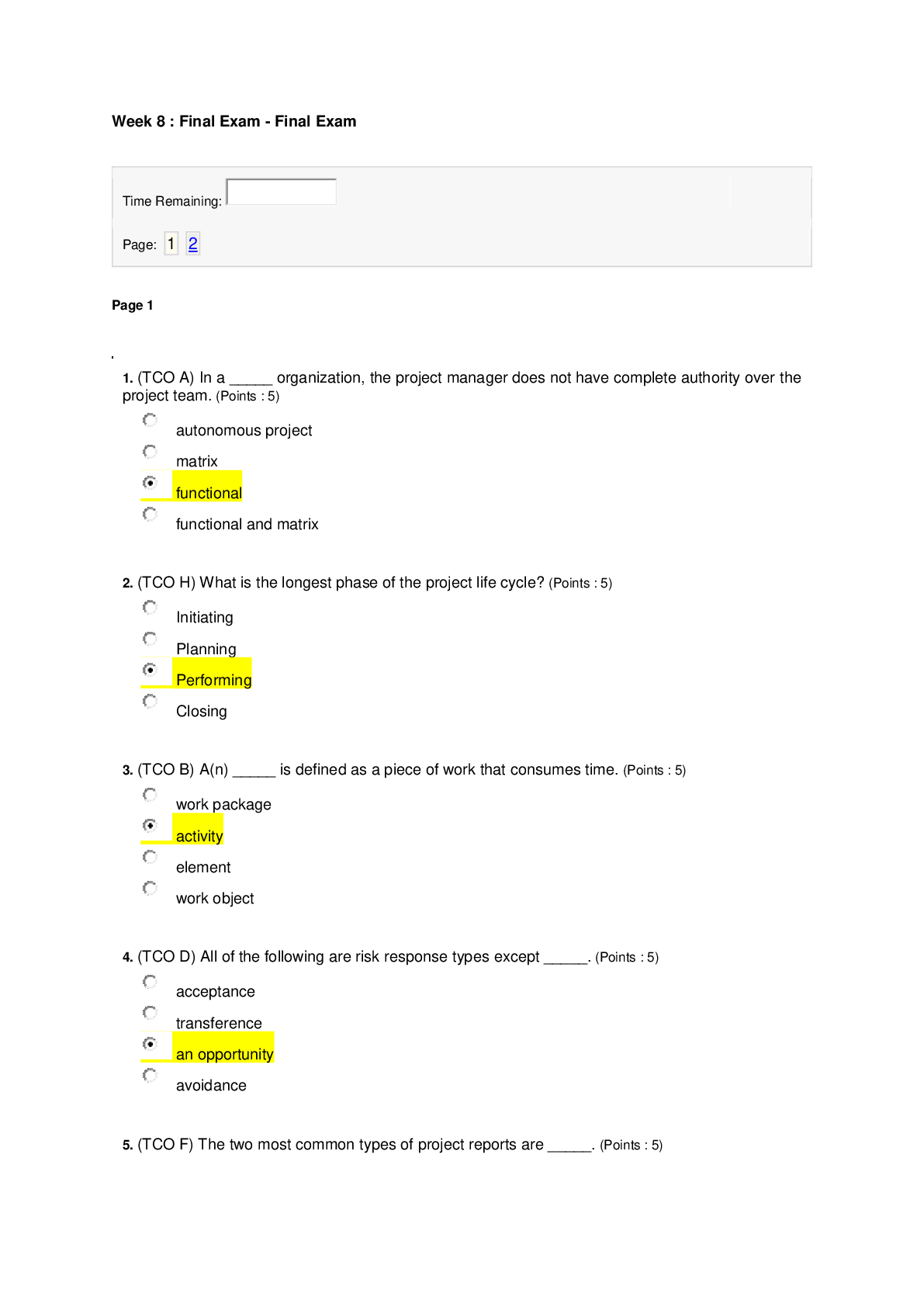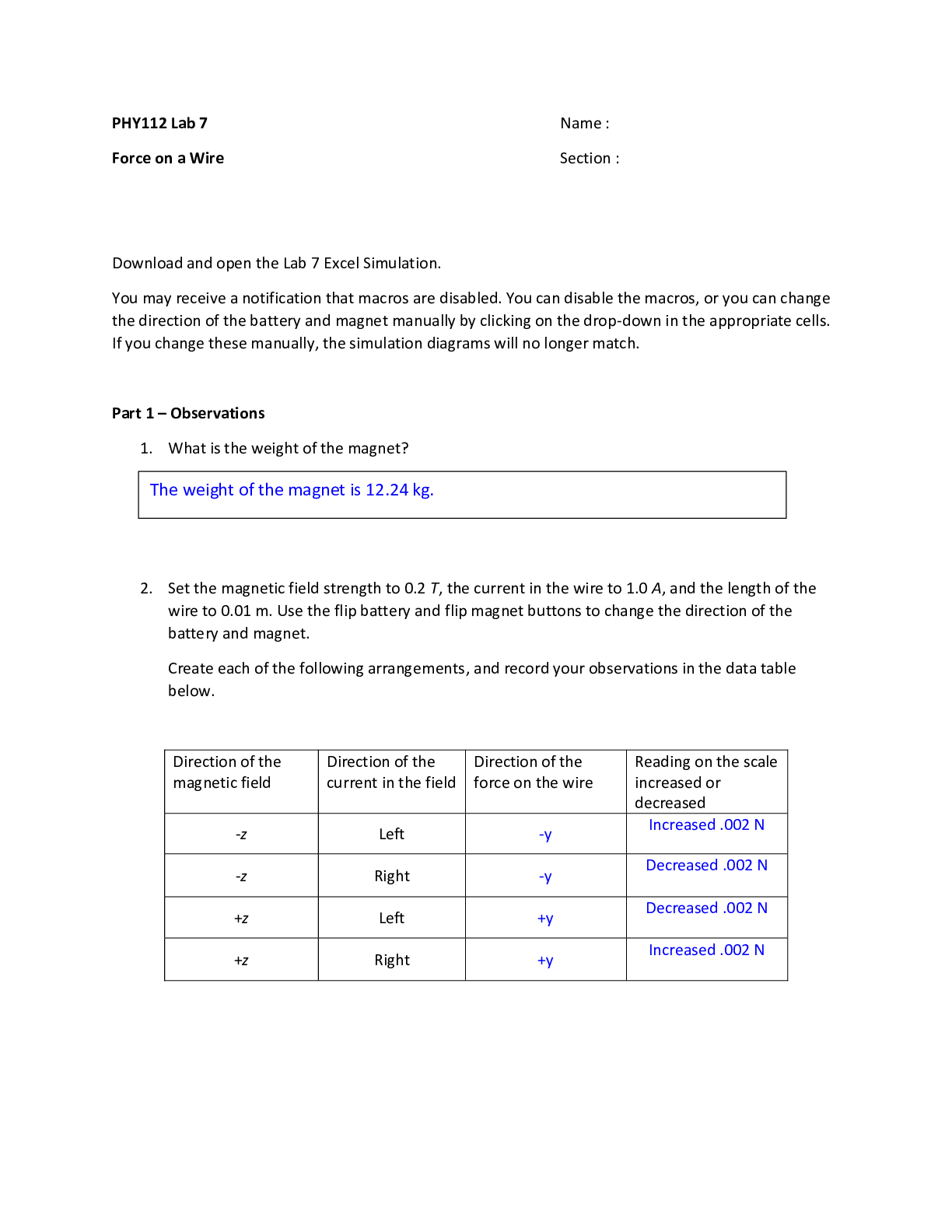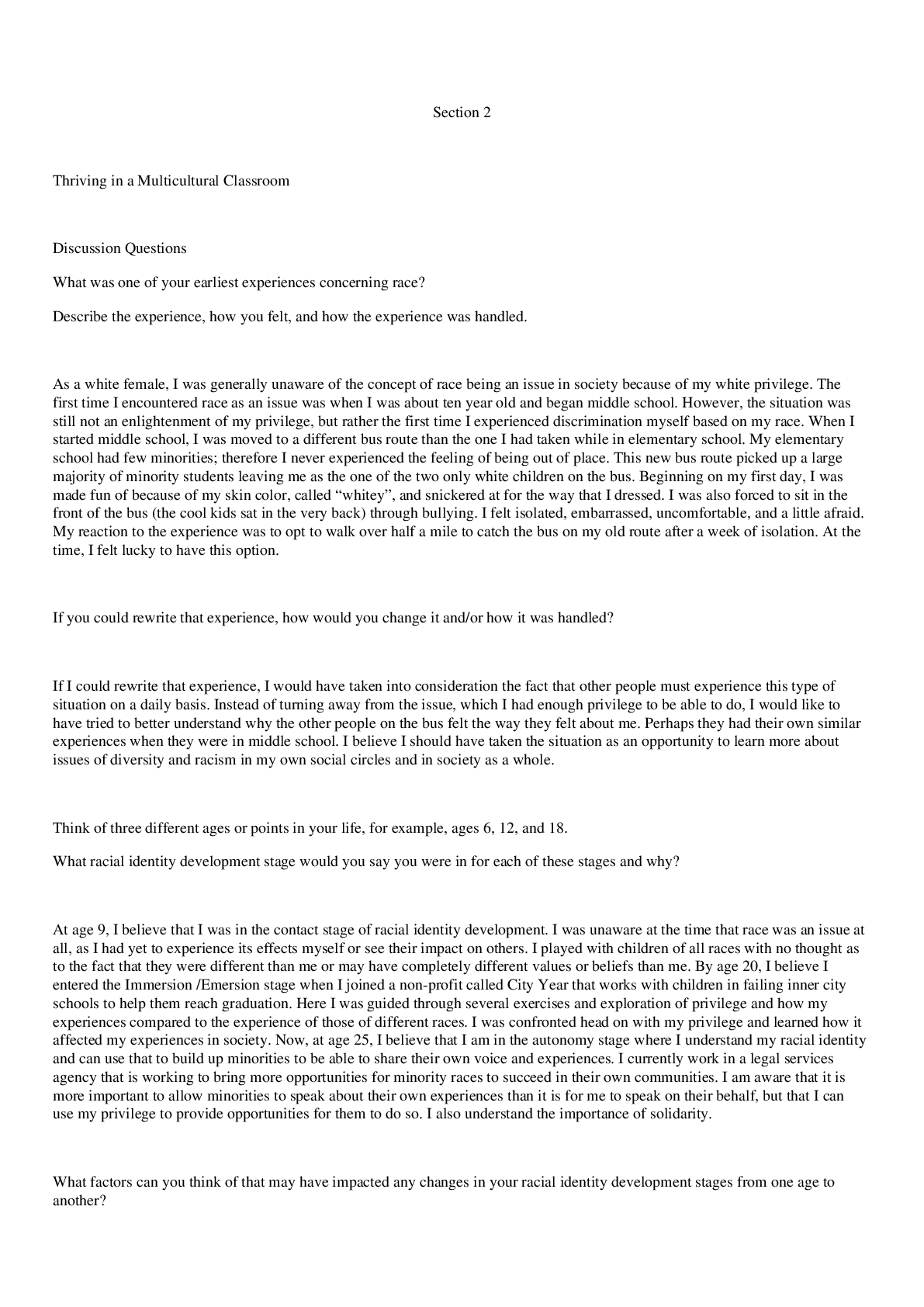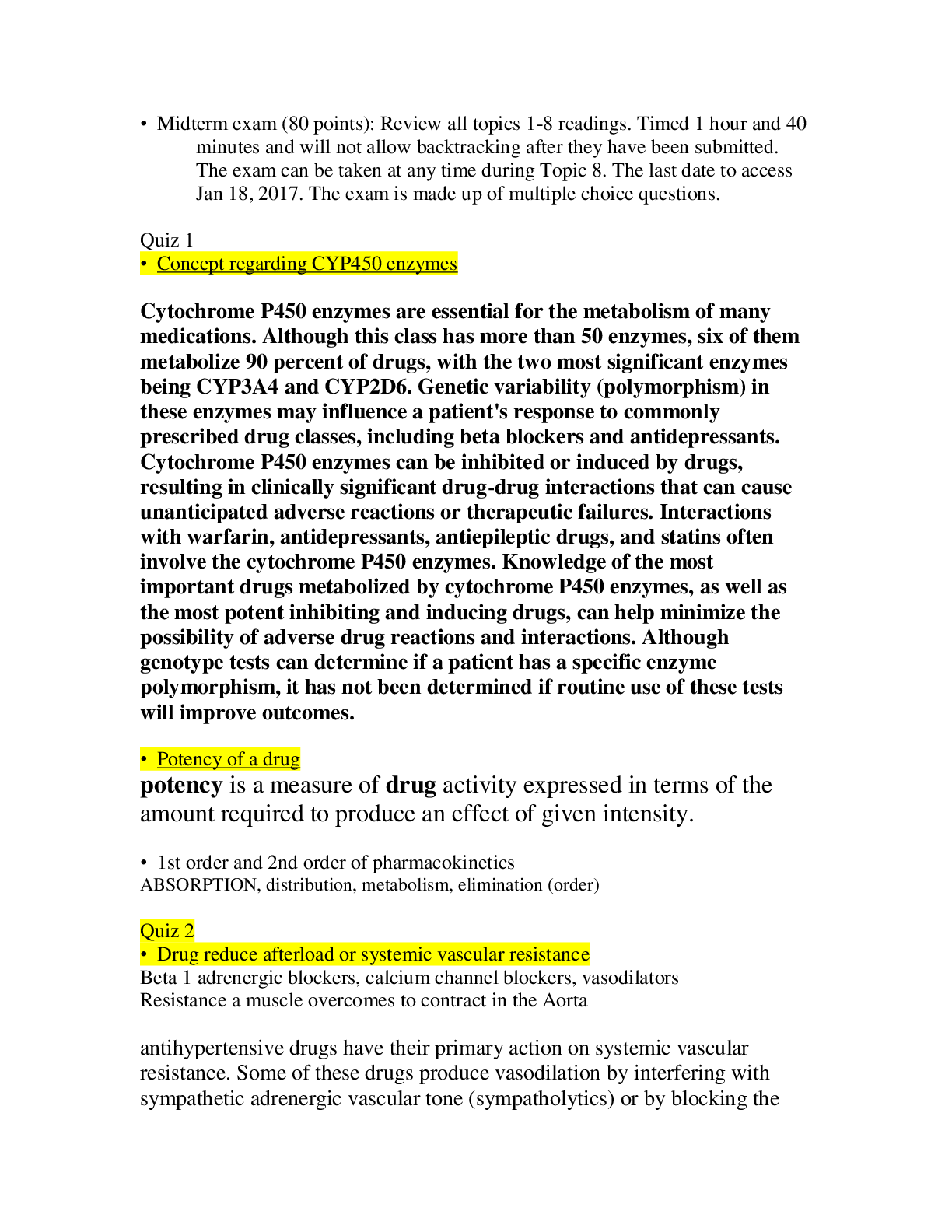BioChemistry > STUDY GUIDE > Biochemistry Readiness Check II. (All)
Biochemistry Readiness Check II.
Document Content and Description Below
Choose the correct coding strand (non-template) from this template (non-coding) DNA: 5' ACG GTA 3' (1/1 Points) 5' UAC CGU 3' 3' UAC CGU 5' 3' TAC CGT 5' 5' TAC CGT 3' Correct! First, note that... we are asked for a template/non-coding strand of DNA. DNA uses the base T where RNA uses the base U. Therefore, we can eliminate the two answers containing U because they must be RNA and we want DNA. Then, recall that any strands of nucleic acid that bind to each other (base pairing; A-T/U or C-G) must be each be running in opposite directions (antiparallel; a strand running 5'-->3 is bound to a strand running 3'-->5'). If any two strands of nucleic acid (for example 2 strands of DNA in a double helix) are complementary (A-T/U or C-G), the two strands must run IN OPPOSITE directions, 5'--->3' and 3'--->5'. 2 If one strand of chromosome 2 has a DNA sequence that consists of this: 5’ AAG CGG TAC GTA 3’, what will be the composition of the complementary DNA strand? (Select all that apply) (1/1 Points) 5' TTC GCC ATG CAT 3' 3' TTC GCC ATG CAT 5' Correct! All complementary base pairing must be antiparallel. The strand that is complementary to 5’ AAG CGG TAC GTA 3’ is 3' TTC GCC ATG CAT 5'. If we simply 'flip' the sequence, we get 5' TAC GTA CCG CTT 3'. Thus, both of these are the correct answers. 3' TTC GCC ATG CAT 5' 3' TTC GCC ATG CAT 5' 5’ AAG CGG TAC GTA 3’ 3' AAG CGG TAC GTA 5' is similar to the original sequence (5’ AAG CGG TAC GTA 3’), but its 5' and 3' ends are swapped. 5' TAC GTA CCG CTT 3' Correct! All complementary base pairing must be antiparallel. The strand that is complementary to 5’ AAG CGG TAC GTA 3’ is 3' TTC GCC ATG CAT 5'. If we simply 'flip' the sequence, we get 5' TAC GTA CCG CTT 3'. Thus, both of these are the correct answers. 3' TTC GCC ATG CAT 5' 3' TTC GCC ATG CAT 5' 5’ AAG CGG TAC GTA 3’ 3' AAG CGG TAC GTA 5' is similar to the original sequence (5’ AAG CGG TAC GTA 3’), but its 5' and 3' ends are swapped. 3' AAG CGG TAC GTA 5' 5’ ATG TAC GGC GAA 3' 3 The following sequence is the coding strand of the collagen gene: 5’ ATG GCG TTC GAA 3’ What is the sequence of the corresponding mRNA? (1/1 Points) 3' ATG GCG TTC GAA 5' 5' AUG GCG UUC CUU 3' 5' AUG GCG UUC GAA 3' Correct! The coding strand and the mRNA both go in the same direction, but do not both contain Ts. 5' UTG GCG TTC GUU 3' 4 Which ingredients/molecules are required to set up a polymerase chain reaction? Select all that apply. (1/1 Points) Amino Acids RNA nucleotides DNA polymerase Correct! In PCR, a DNA sample is separated into single strands and incubated with DNA polymerase, deoxynucleotides (dNTPs), and two short DNA primers whose sequences flank the DNA segment of interest and thus define the region to be amplified. Recall from the section on DNA replication that DNA polymerase needs a primer to begin DNA synthesis. This requirement means the primers will direct the DNA polymerase to only synthesize complementary strands of the target DNA. DNA nucleotides Correct! In PCR, a DNA sample is separated into single strands and incubated with DNA polymerase, deoxynucleotides (dNTPs), and two short DNA primers whose sequences flank the DNA segment of interest and thus define the region to be amplified. Recall from the section on DNA replication that DNA polymerase needs a primer to begin DNA synthesis. This requirement means the primers will direct the DNA polymerase to only synthesize complementary strands of the target DNA. Template DNA Correct! In PCR, a DNA sample is separated into single strands and incubated with DNA polymerase, deoxynucleotides (dNTPs), and two short DNA primers whose sequences flank the DNA segment of interest and thus define the region to be amplified. Recall from the section on DNA replication that DNA polymerase needs a primer to begin DNA synthesis. This requirement means the primers will direct the DNA polymerase to only synthesize complementary strands of the target DNA. DNA Primers Correct! In PCR, a DNA sample is separated into single strands and incubated with DNA polymerase, deoxynucleotides (dNTPs), and two short DNA primers whose sequences flank the DNA segment of interest and thus define the region to be amplified. Recall from the section on DNA replication that DNA polymerase needs a primer to begin DNA [Show More]
Last updated: 2 years ago
Preview 1 out of 24 pages

Buy this document to get the full access instantly
Instant Download Access after purchase
Buy NowInstant download
We Accept:

Reviews( 0 )
$10.00
Can't find what you want? Try our AI powered Search
Document information
Connected school, study & course
About the document
Uploaded On
Jun 08, 2021
Number of pages
24
Written in
Additional information
This document has been written for:
Uploaded
Jun 08, 2021
Downloads
0
Views
115



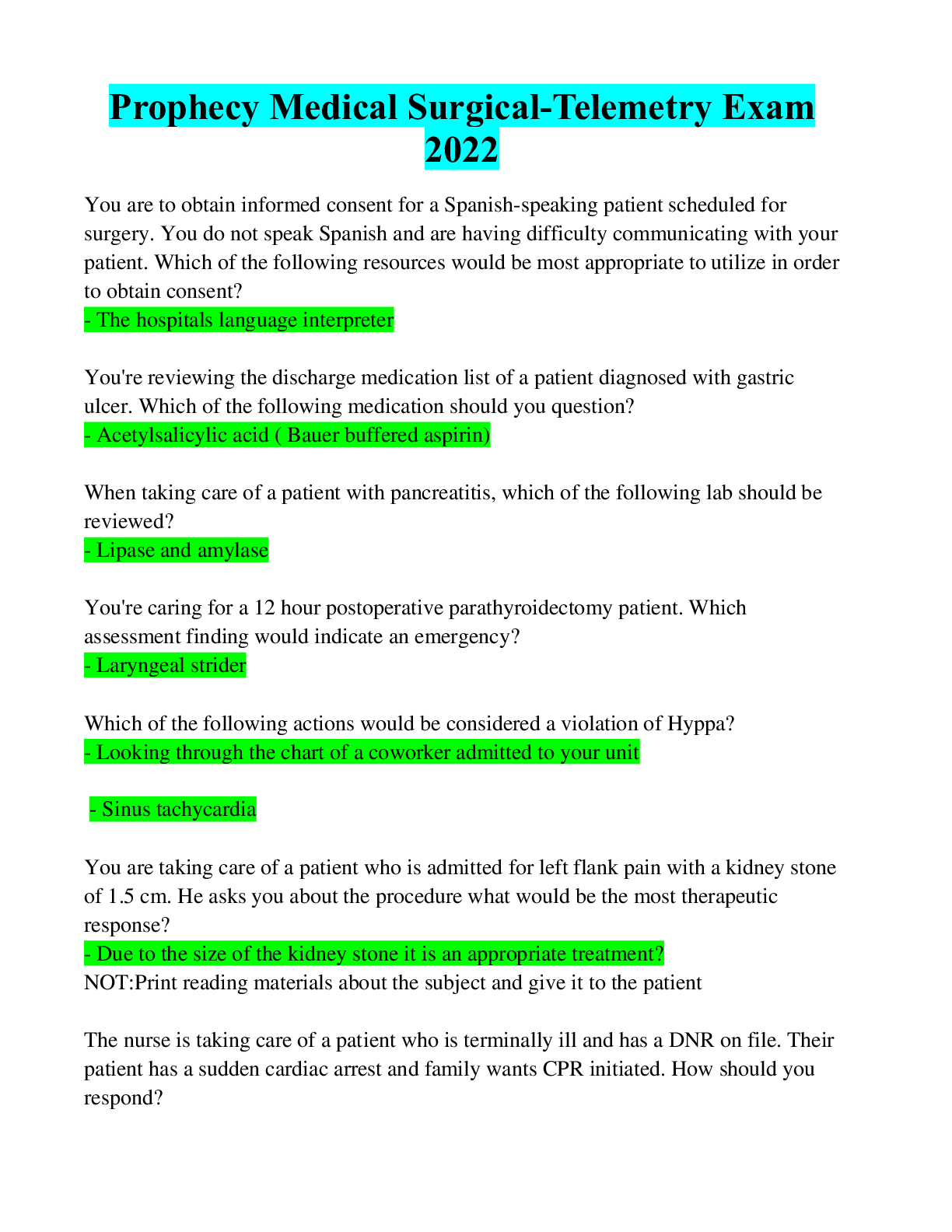


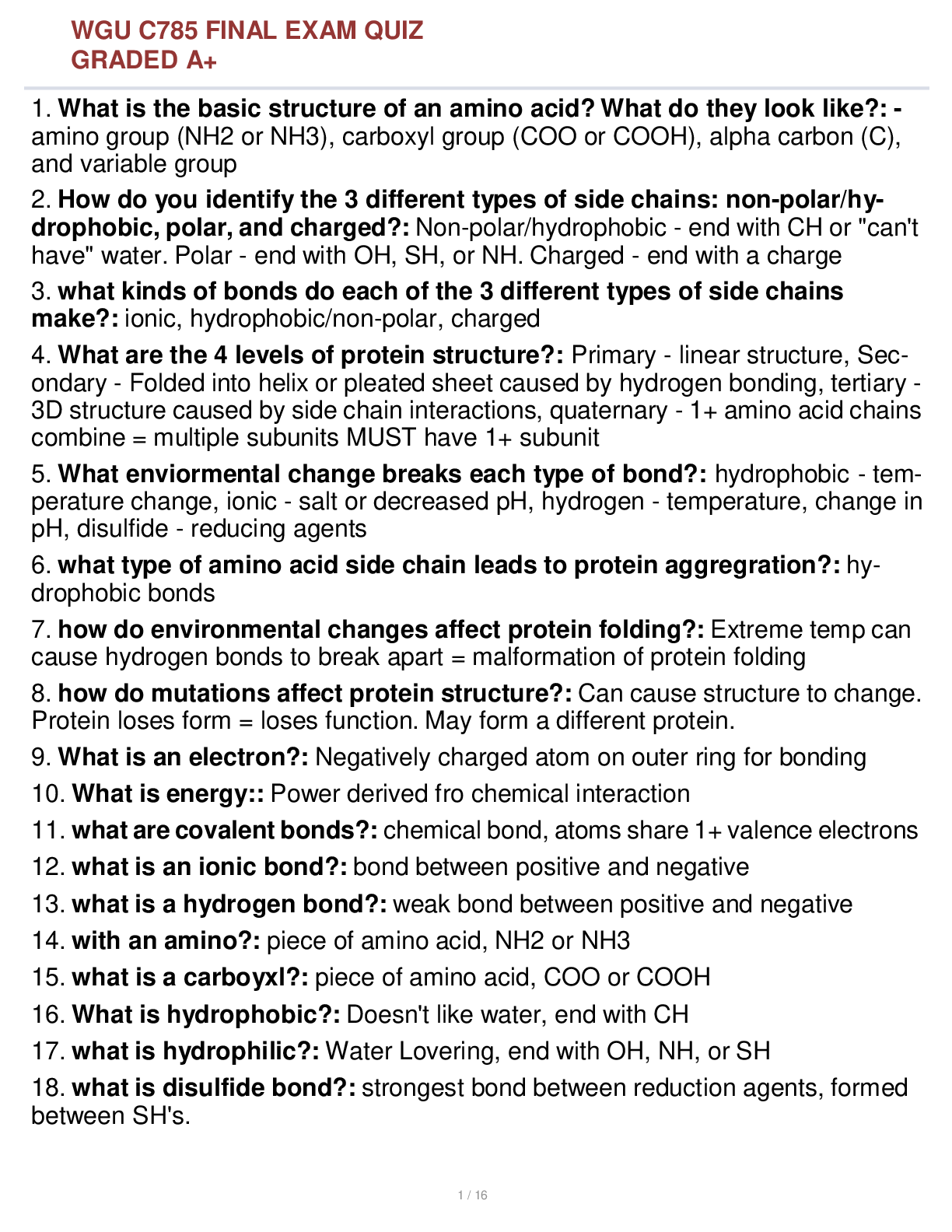
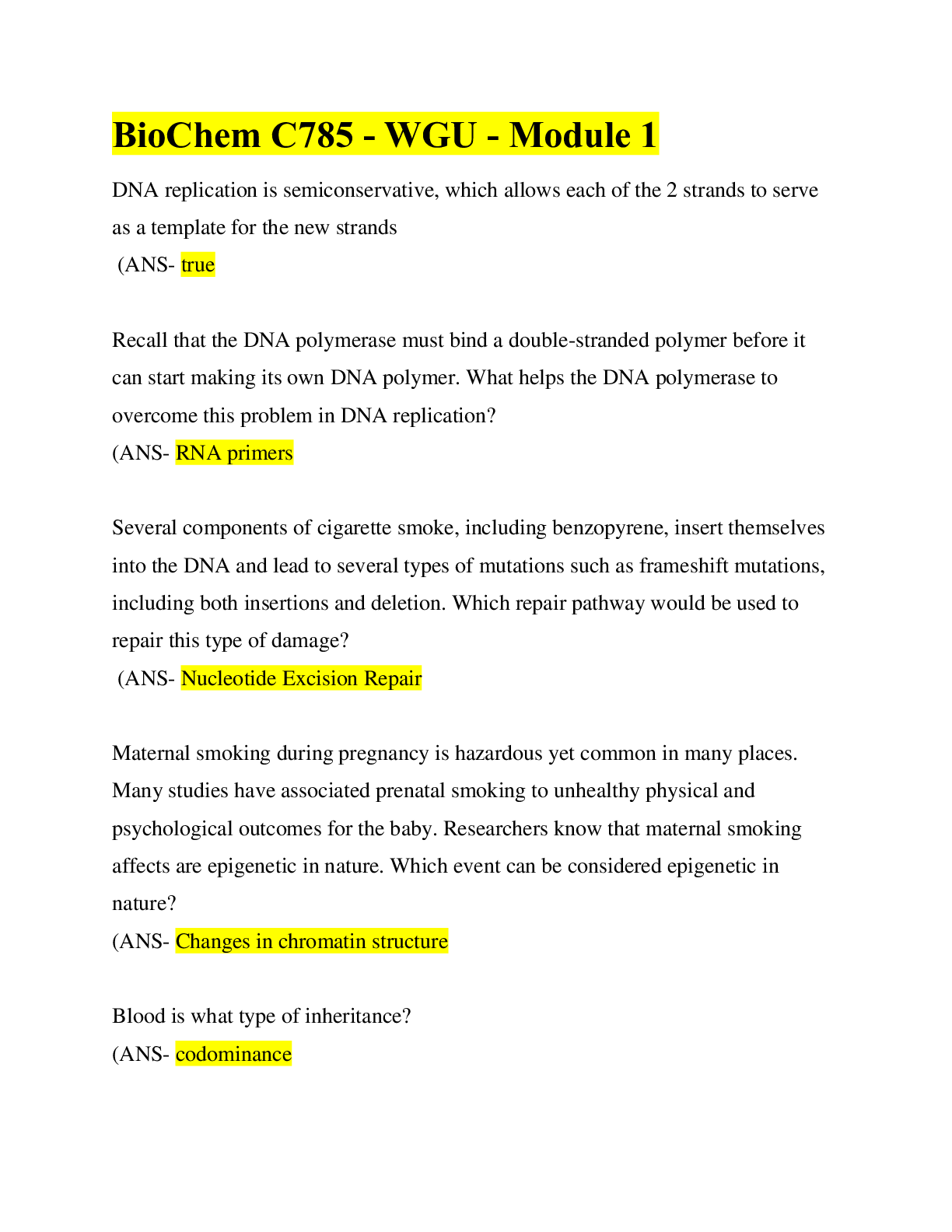
.png)

.png)

